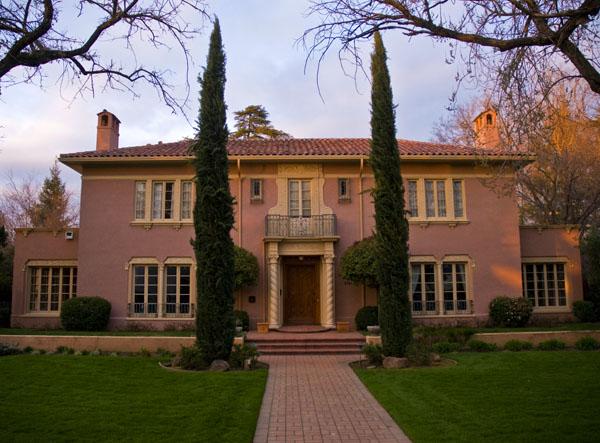Vacant mansion costs Sac State $40,000 a year for upkeep

julia morgan:Julia Morgan House, the empty mansion on T Street, costs Sacramento State $40,000 a year to maintain. :Timothy Sandoval – State Hornet
February 24, 2010
Julia Morgan House, the historic home worth millions that was donated to Sacramento State, has not been used since 2007, despite the university paying more than $40,000 a year for its maintenance.
The house was previously used to host various faculty and student events and fund-raisers for the university, but has not been used due to budget constraints.
The house, located on T Street, was built in the early 1920s by Julia Morgan, the first licensed female architect in California.
“It’s a very attractive building,” said Don Gerth, president of Sacramento State from 1984 to 2003.
Charles M. Goethe, a founder of Sac State, bequeathed the house when he died in 1966 as part of a now-controversial package of donations Goethe left to the university, which also included his library, papers and $640,000. Goethe was the president of the Eugenics Research Association in the 1930s, which believed in selective breeding to create a master race and publicly supported Nazis.
University Enterprises Inc. has operated the house since it was bequeathed in 1966.
The house is listed on the National Registry for Historic Places, which incurs responsibility for UEI to continue preventative and operational maintenance on the house. UEI also pays for general maintenance and landscaping for the house, costing UEI $41,458 in the last year UEI has budgeted.
“We maintain it so it doesn’t become an eyesore in the neighborhood,” said John Kepley, special assistant to President Alexander Gonzalez.
In the Aug. 5, 2009, meeting notes for the University Budget Advisory Committee, Gonzalez noted that not using Julia Morgan House was necessary as a cost-saving measure to UEI because the house had “steadily been losing monies.”
When the house was in use, it cost UEI a $244,000 a year to operate.
Since the house is listed on the Registry, UEI also cannot change the house in many ways that would save it money. For example, UEI cannot install dual-plated windows onto the house, which would save substantially on the house’s heating costs.
UEI’s funding comes from investments its activities and business operations.
Kepley said there are no future plans for the house.
There is no current appraisal on the home; a 2004 article in The Sacramento Bee valued the home at $2 million.
Kevin Wehr, president of the Sac State chapter of the California Faculty Association, said the house’s lack of use is another example of administrative mismanagement.
“They have this terrific resource that could be used by the campus and the community,” Wehr said. “It seems to me that once again the administration is not making the best use of resources that it could for the benefit of the campus and students.”
Wehr said the house could be used for many different things, including community meetings, faculty and student events, or fundraising.
Wehr said the house could be self-sustaining, pointing to how many city parks, and even Sac State’s University Union, now charge a small rental fee for the use of facilities.
Timothy Sandoval can be reached at tsandoval@statehornet.com.































































































































